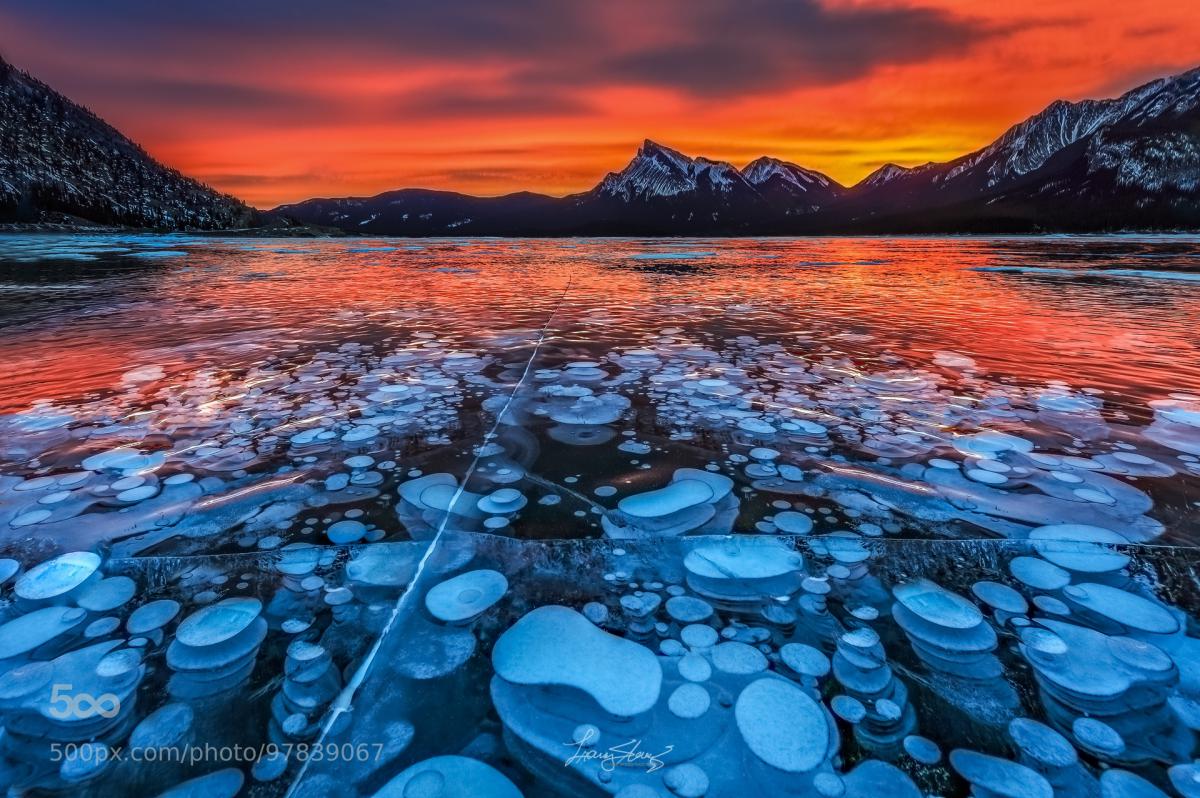
Abraham Lake is a man-made lake in Alberta, Canada. It is located on the upper course of the North Saskatchewan river, at the base of the Canadian Rockies.
-
53.7 km2 (20.7 sq mi) surface area
-
32 km (20 mi) long
The construction of Bighorn Dam in 1972 was accompanied by the creation of Abraham Lake. The lake is named after Silas Abraham, who was a nineteenth century inhabitant of the river valley. The name came up as a result of a contest sponsored by Alberta government. The contestants had to submit proposition of a name that has a cultural, topographical, ethnical, historical and geographical significance for the area. Silas Abraham was picked up as the best choice of a name of the lake for the fact that he and his Indian family lived in the valley of the North Saskatchewan River. He guided, helped and supported the explorations and adventures carried out by the famous Martin Nordegg, Mary Schaffer, and Elliott Barns. Moreover, Abraham’s personality is noteworthy because of his assistance in the construction of the first log building in the valley- Tom Wilson’s Cabin.
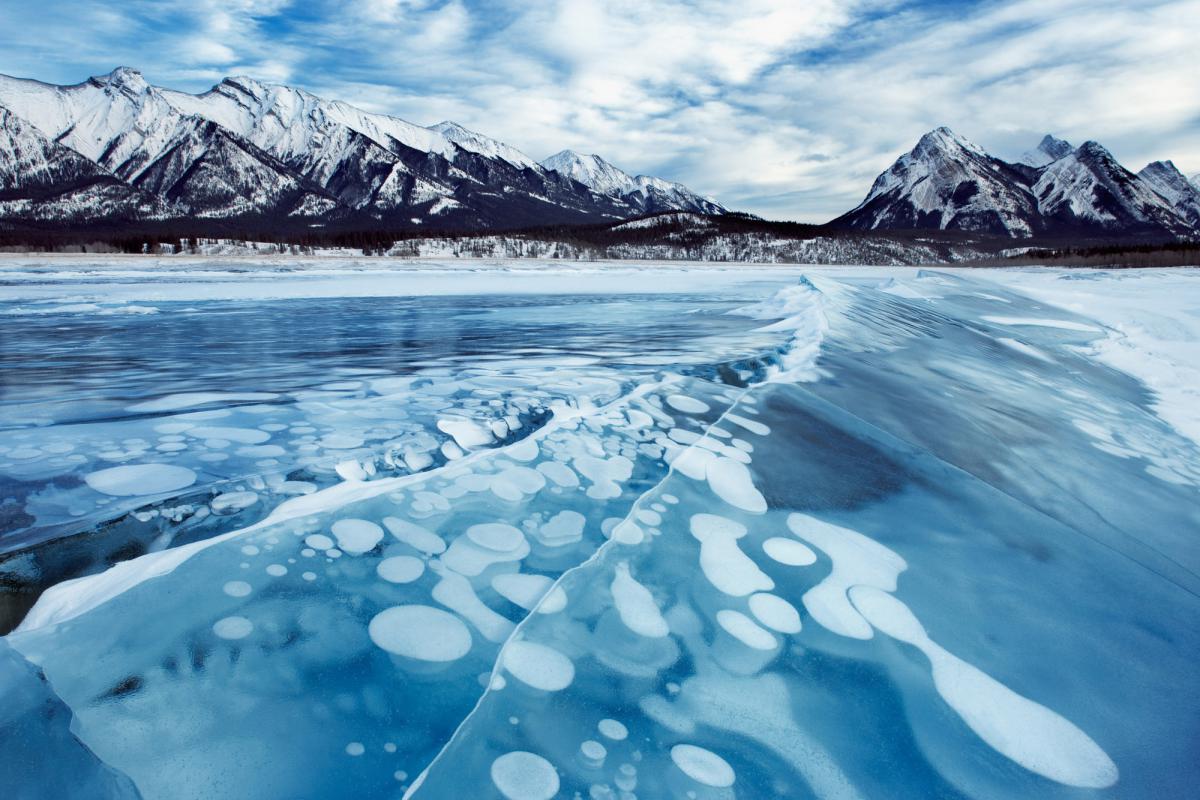
Although Abraham lake is an artificial one, it still has an amazing turquoise color, which is due to the rock flour- silt or clay produced from rocks by the movement of glaciers.
The lake is a popular must-see amongst photographers, since it provides the opportunity to capture and observe the quite rare phenomenon of frozen bubbles just underneath the lake’s surface.
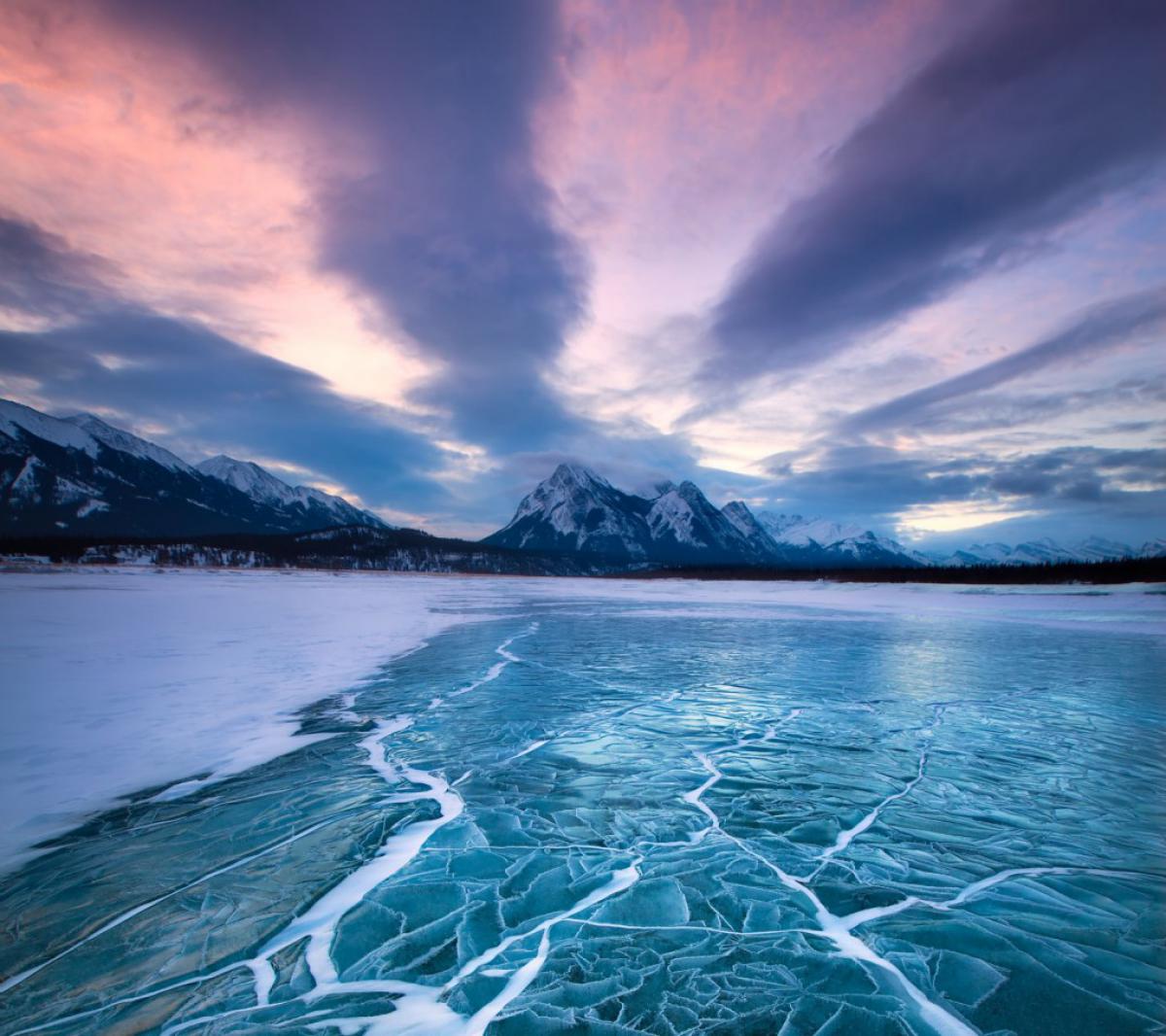
Though the lake’s surface is frozen, it is not covered with snow, which makes it easy to be enjoying the spectacular view of the so popular icy bubbles. These bubbles are produced when methane gas is released in the water, reaches the colder winter lake surface and stacks of gas get frozen just beneath the surface. Organic matter, including plants, leaves, trees, and even once-living animals, is decomposed by different types of water bacteria; the process of decomposition is accompanied by the production of methane gas. The culmination of the process is marked by the gorgeous white-blue, cotton-like formations just underneath the frozen surface of Abraham lake.
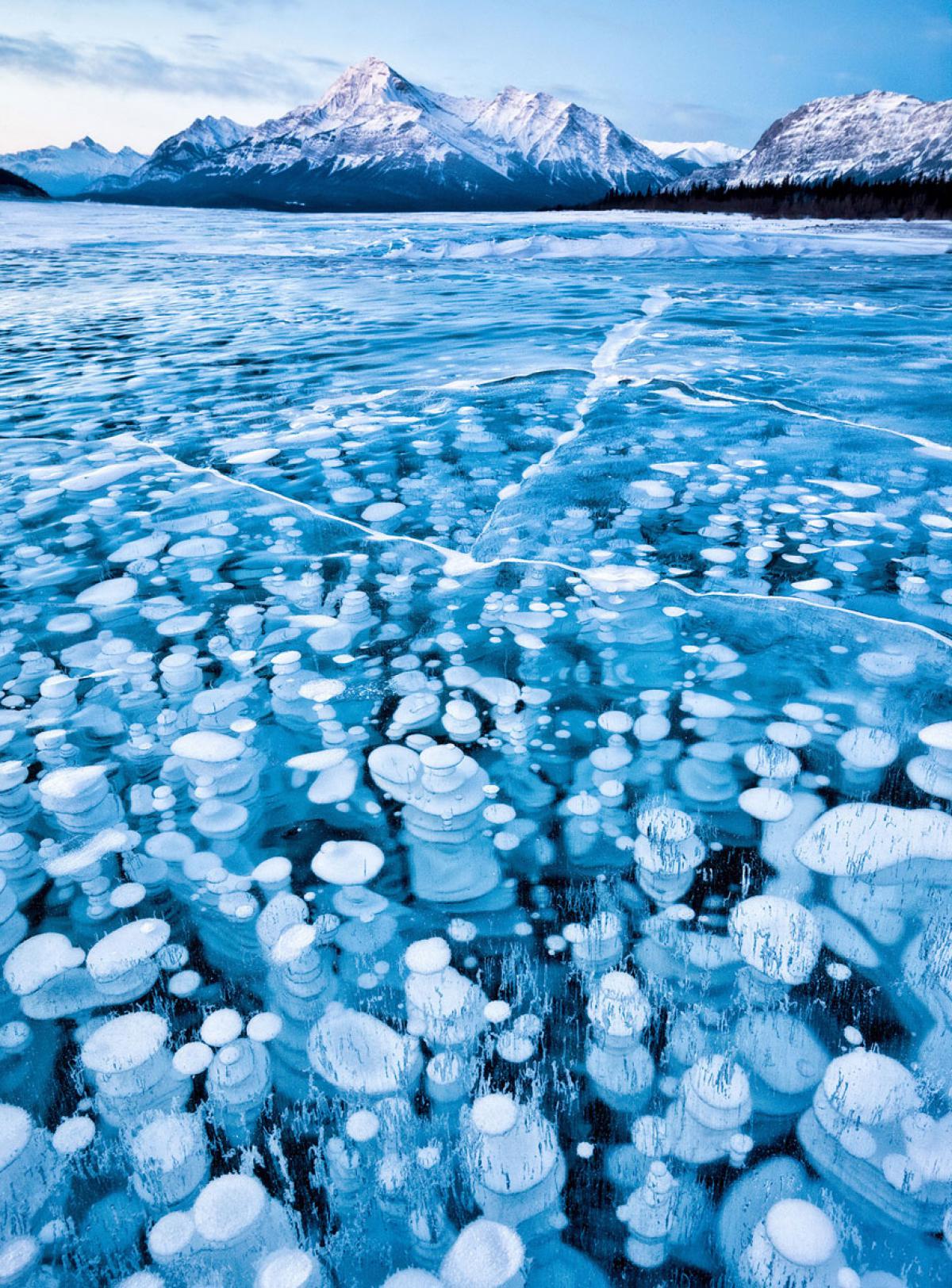
Manmade reservoirs such as Abraham lake, are usually constructed when dry land is flooded. This means that there is an excess of previously living plants, soil, animals from farms, sewage systems, etc. The more organic matter under water, the higher decomposition rates are. As a result, the methane hydrate- the white rock substance on the lake bed- forms the picturesque bubble-like frozen pieces of art.
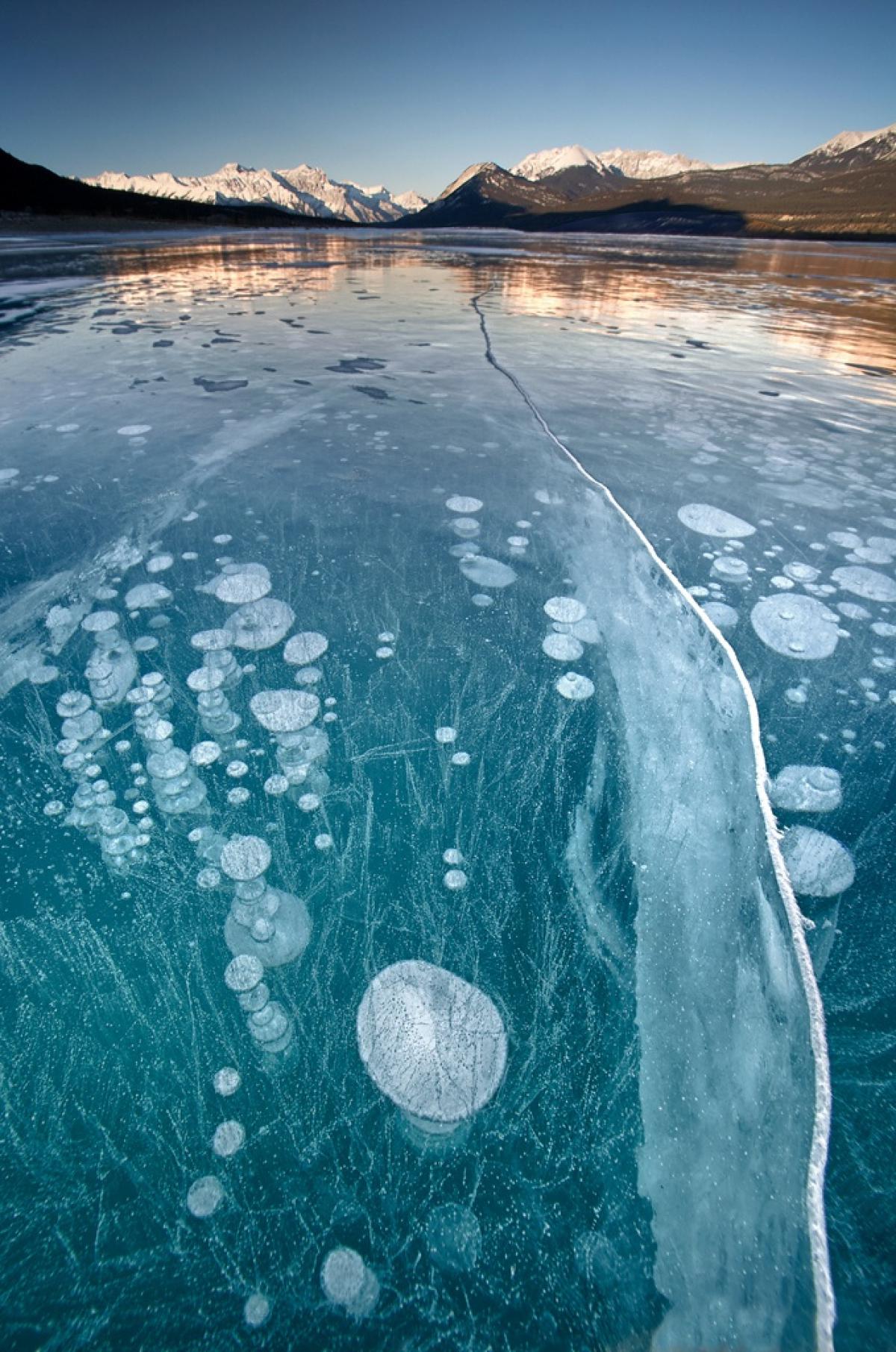
For more amazing lakes click here
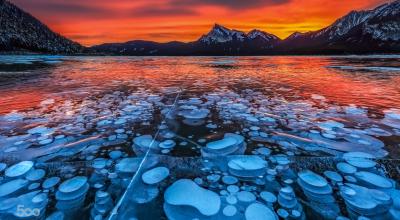
Leave a Reply